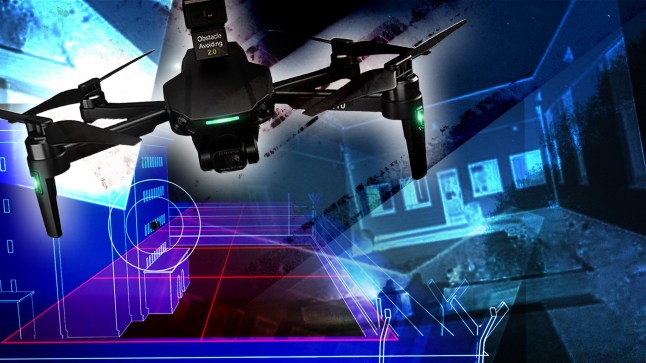
A laser screen is being used to stop escapes from a secure mental health facility in what may be a precursor to the device’s use at UK prisons.
The British-made technology allows the operators to detect and pinpoint a person scaling a wall or where a drone has landed at a jail.
Detector equipment company GJD has installed the ‘laser shield’ at the facility in North Yorkshire and is deploying it at a new prison in the US.
The system creates a ‘virtual curtain’ of up to 25 metres (82ft) and can be positioned horizontally or vertically to secure windows or courtyards.
The use of drones to smuggle drugs, phones, weapons and other contraband into jails has been described as a ‘threat to national security’ by an inspector.
To view this video please enable JavaScript, and consider upgrading to a web
browser that
supports HTML5
video
In January, the Chief Inspector of Prisons, Charlie Taylor, called for urgent action to tackle drones being flown into high-security facilities holding some of the country’s most dangerous prisoners, including terrorists and organised crime bosses.
His report was followed by an exclusive interview in the Metro where an ex-prison officer told how he had been punched, kicked and had a kettle filled with boiling urine thrown over him while working at HMP Frankland.
GJD’s Stephen Jordan, a security industry veteran with more than 20 years’ experience, said: ‘We have seen in the reports that netting isn’t preventing drones from getting through, and it seems strange that the Ministry of Justice (MoJ) wants to continue with this strategy.
‘GJD believes that having a laser system that can notify the security team when and where a drone has penetrated, allowing the team to seize the contraband as soon as it comes into the prison before it is given the chance to be distributed to inmates, is a far better solution.’
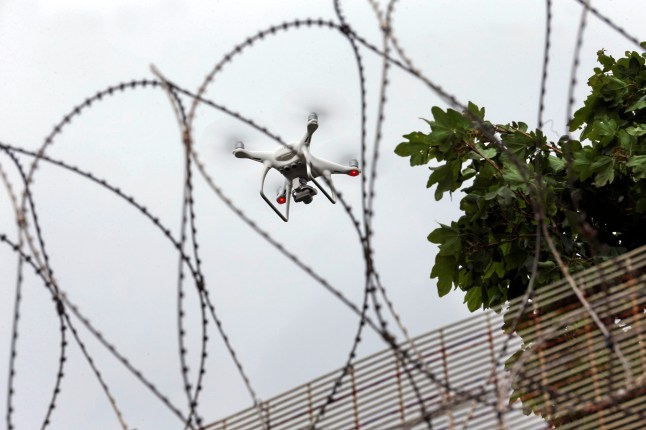
Jordan added that the company ‘have examples from across the globe of our D-TECT Laser solving the problems that the UK prison service is experiencing.’
The laser system is currently being incorporated into the US correctional facility and GJD expects it to pick up traction at other jails across the world after 12-18 months.
Existing uses include the mental health facility, which had issues with contraband being thrown in and patients trying to climb out, and at sites requiring an armed response.
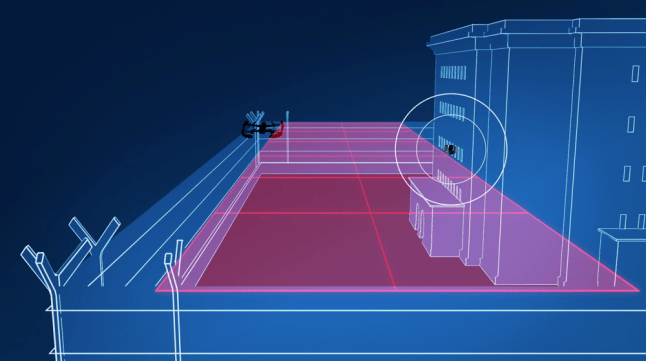
The system, which is accurate to within 10cm, is being used to create an invisible ‘virtual ceiling’ without patients at the unnamed hospital feeling like they are being trapped under netting.
Ben Lea, GJD’s sales manager for the North, Scotland and Ireland, told Metro: ‘There are LiDAR [light detection and ranging] and radar systems out there but the technology is very expensive and it can only be used in certain places and not others.
‘The D-TECT is unique; it’s like a shield of laser glass which can be mounted horizontally or vertically to protect rooftops, balconies, perimeters, skylights and even paintings which can be targeted by thieves and protestors who want to vandalise priceless works of art.
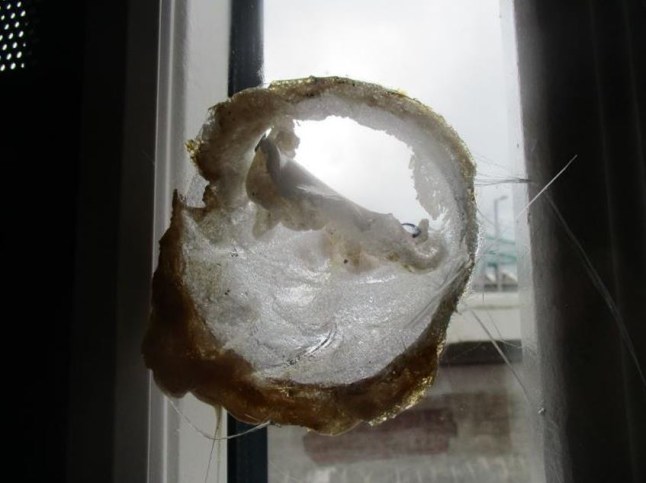
‘The laser curtain can be as high as 25 metres and while you can walk around it the second you try and go through it you will be detected.
‘At the highly secure mental health facility it is being used to check if anyone is trying to escape from an open courtyard and garden area without the need to install railings or netting.
‘The D-TECT is also being used in a lot of other high-security areas protecting valuable assets and property.
‘Two of the places where it’s in use can send an armed response.
‘In the US we are working with a new prison in Wisconsin where they want to stop drones and projectiles, so we are installing the lasers to stop the objects entering the facility.
‘There is growing demand and once we have the proof of concept from the US we are confident that it will feed back into the UK, Europe and other parts of the world.’
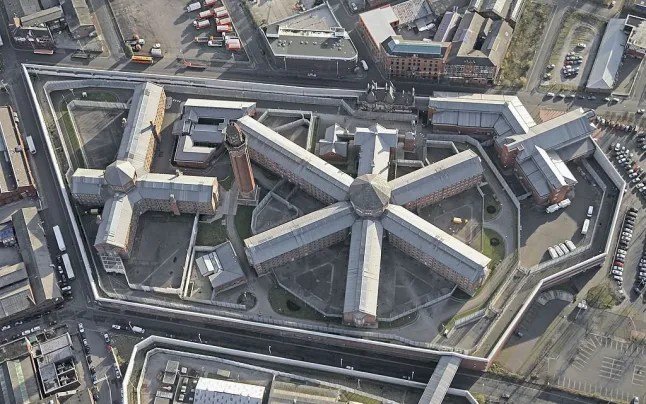
The D-TECT was promoted at The Security Event at the NEC earlier this month, where GJD told attendees that a new solution is needed because drones ‘are getting more prevalent and more dangerous as contraband moves from drugs to potentially guns.’
In his report concerning Manchester and Long Lartin jails, Mr Taylor found that prisoners at the former were facilitating aerial drops by burning holes in ‘supposedly secure’ windows.
He concluded that this ‘had the potential to lead to serious disruption and potential escape.’
The inspector said: ‘It is highly alarming that the police and prison service have, in effect, ceded the airspace above two high-security prisons to organised crime gangs which are able to deliver contraband to jails holding extremely dangerous prisoners including some who have been designated as high-risk category A. The safety of staff, prisoners and ultimately that of the public, is seriously compromised by the failure to tackle what has become a threat to national security.’
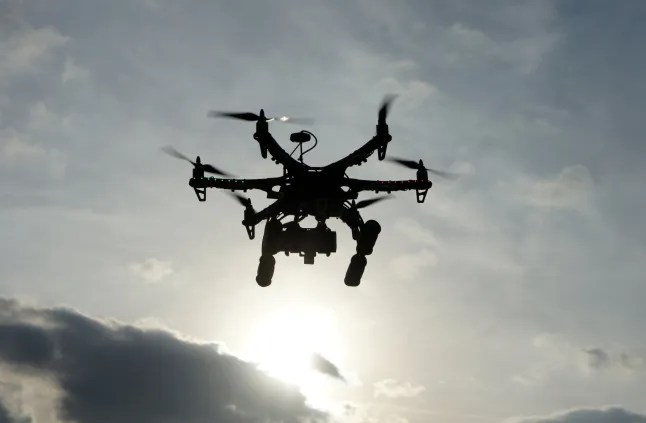
The MoJ said at the time of Mr Taylor’s report that new netting and CCTV were being installed at HMP Manchester.
Her Majesty’s Prison and Probation Service invests in countermeasures such as improvements in windows, netting and grilles with the aim of preventing drones from delivering cargo such as drugs and weapons.
Restricted fly zones were introduced around jails 12 months ago, making it an automatic offence to fly drones within 400 metres of any closed prison or young offender institution in England and Wales without permission.
The MoJ maintains that it is working with international partners who are facing the same issues on their jail estates as well as other departments ‘to develop our learning and share best practice.’
A spokesperson said: ‘The precise tactics we use to counter drones is operationally sensitive. We’ve created restricted fly zones around prisons, invested in countermeasures and are collaborating with the police to deter, detect and disrupt the illegal use of drones around prisons.’
Do you have a story you would like to share? Contact josh.layton@metro.co.uk


